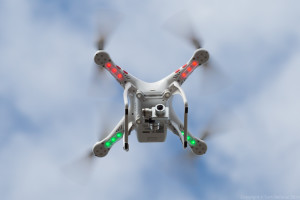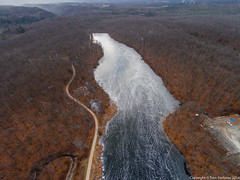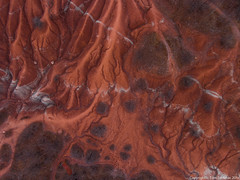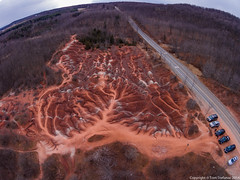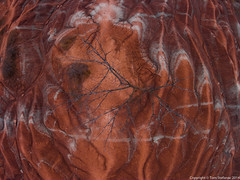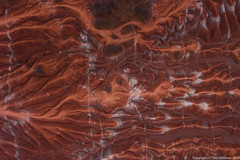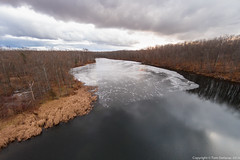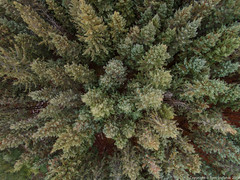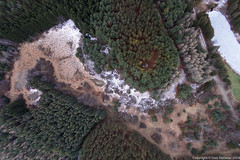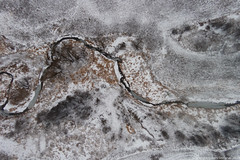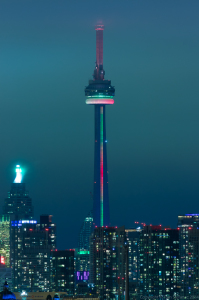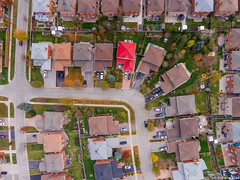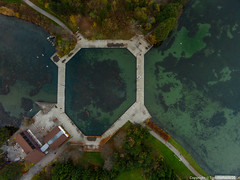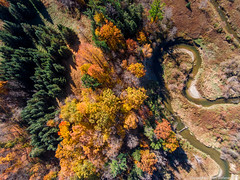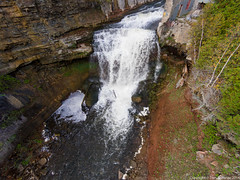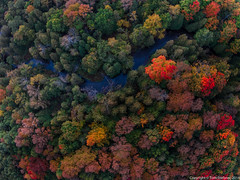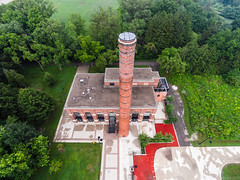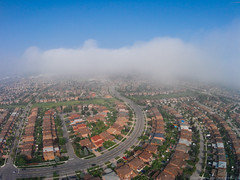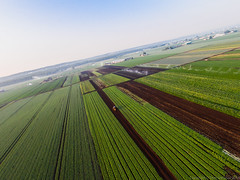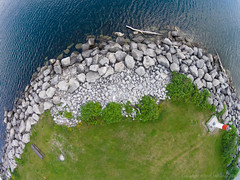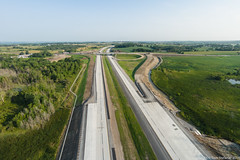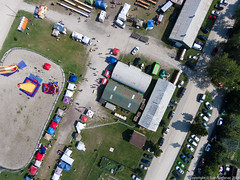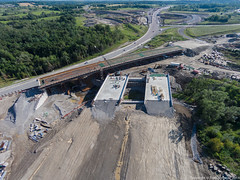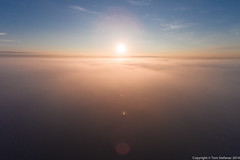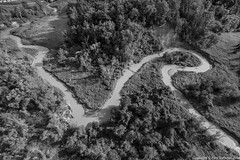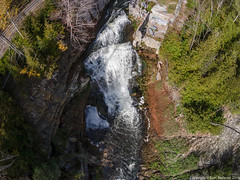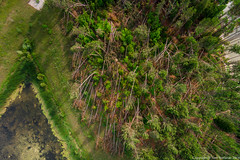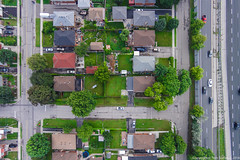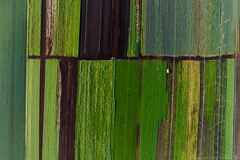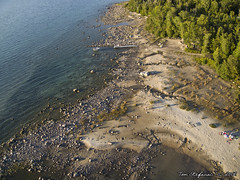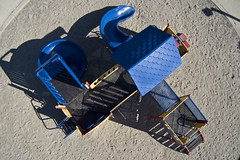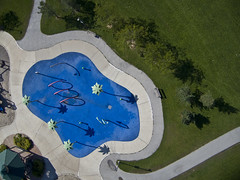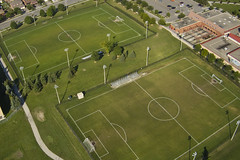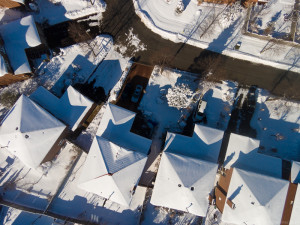 It’s winter, it’s cold, it’s cloudy, there’s snow, the daylight hours are short and the weather rarely cooperates with your busy schedule right? So what are you going to do? You might find caveats such as some elusive bird of prey that only shows up when it’s freezing out or maybe a beautiful scene the morning after a snow storm, but let’s be realistic, how often do these great outdoor photo opportunities arise in the winter? The answer is not all that often and the sun seems to cooperate less frequently which means without something to create contrast across that snowy landscape you’ve got a lovely bland white backdrop with little detail.
It’s winter, it’s cold, it’s cloudy, there’s snow, the daylight hours are short and the weather rarely cooperates with your busy schedule right? So what are you going to do? You might find caveats such as some elusive bird of prey that only shows up when it’s freezing out or maybe a beautiful scene the morning after a snow storm, but let’s be realistic, how often do these great outdoor photo opportunities arise in the winter? The answer is not all that often and the sun seems to cooperate less frequently which means without something to create contrast across that snowy landscape you’ve got a lovely bland white backdrop with little detail.
So what do you do? If you’re like me and have been fortunate enough to purchase a UAV/drone/quad-copter/remote control aircraft and have the abilities to take aerial photographs for pleasure, the winter is great! Aerial photos never seem to get boring. I have fun flying my quad copter around while seeing the world from the air and hunting for that perfect photo. The biggest drawback is the cold. In the summer you have those pesky mosquitoes trying to suck your blood but at least it’s warm, in the winter you need a good pair of thermal gloves with capacitive touch capabilities and layers of clothing. Even then no matter what, it seems after 20-30 minutes of standing still you begin to feel the cold penetrate. But the trade-off is that while summer landscapes are flush with colour, you still have an overwhelming amount of green, in the winter the landscape has little colour but the contrast is extreme.
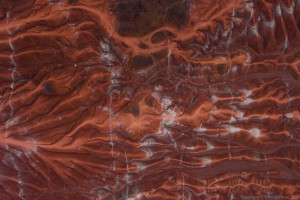 Recently I visited the Cheltenham Badlands on a cold -6 celcius weekday. These badlands are only about 25-30 minutes for my home so it’s a quick easy drive and I really love visiting this place. The problem with the badlands is that they’ve become extremely popular. If you visit on a weekend in the summer it’s like a theme park. If you visit on a weekend in the winter it’s less busy but still way too busy to take photos without people accidentally getting in the way or having some form of interruption. A cold weekday is the perfect time to have the place all for yourself and in my case, perfect to safely fly my UAV without curious bystanders interrupting or worse, someone who’s paranoid that thinks you’re photographing them from the air covertly (insert joke here). The badlands are also legally safe for UAV’s in Canada since they meet the minimum sub-2kg SFOC exemption requirements for population, airspace type, aerodrome distance and safety.
Recently I visited the Cheltenham Badlands on a cold -6 celcius weekday. These badlands are only about 25-30 minutes for my home so it’s a quick easy drive and I really love visiting this place. The problem with the badlands is that they’ve become extremely popular. If you visit on a weekend in the summer it’s like a theme park. If you visit on a weekend in the winter it’s less busy but still way too busy to take photos without people accidentally getting in the way or having some form of interruption. A cold weekday is the perfect time to have the place all for yourself and in my case, perfect to safely fly my UAV without curious bystanders interrupting or worse, someone who’s paranoid that thinks you’re photographing them from the air covertly (insert joke here). The badlands are also legally safe for UAV’s in Canada since they meet the minimum sub-2kg SFOC exemption requirements for population, airspace type, aerodrome distance and safety.
That said, in the winter with all the dead vegetation the Cheltenham Badlands really look like some sort of a barren desert landscape. There’s also something strange that happens with the soil, I’m not sure if it’s a product of water, the minerals present or just some sort of optical illusion but the contrast between the white patches of calcium, red iron laden clay and green oxidized clay is just extreme, far more so than anything I’ve ever seen in the warm season! The photos from the air reveal just how stunning the landscape looks and you seem some amazing symmetry that is invisible on the ground. That said, it’s also an amazing time for more traditional photographs too, especially black and white. Now there is one limitation with the badlands, there cannot be snow cover!!! The instant there is snow you lose your contrast and the lay of the land just looks like a bunch of white snow dunes or dirty muddy snow. Trust me, the snow dunes effect is very boring despite how “interesting” it may sound. Been there, seen it, don’t recommend it period… it’ll be a HUGE let down. Plus if your out on foot your might slip and take a good hard tumble down into one of the steep gullies (I’m speaking from experience).
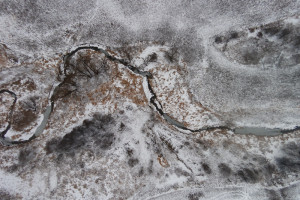 Snow covered landscapes in the winter can look bland from the air especially with a lack of sunlight since often white dominates and blanks out the more subtle detail. The best way to offset this white dominance is by using natural features such as creeks and rivers to accent the landscape. These natural geographic features also look great when accompanied by ponds, marshes, flood plains, trees, shrubs and woodlots. You wont find a ton of colour no matter how hard you look but you’ll sure find stark contrasts where you have shades of dark blues and browns against pure white. If your lucky and can get some sunshine then the contrast level jumps through the roof and any shows will just naturally dodge and burn your photo effortlessly.
Snow covered landscapes in the winter can look bland from the air especially with a lack of sunlight since often white dominates and blanks out the more subtle detail. The best way to offset this white dominance is by using natural features such as creeks and rivers to accent the landscape. These natural geographic features also look great when accompanied by ponds, marshes, flood plains, trees, shrubs and woodlots. You wont find a ton of colour no matter how hard you look but you’ll sure find stark contrasts where you have shades of dark blues and browns against pure white. If your lucky and can get some sunshine then the contrast level jumps through the roof and any shows will just naturally dodge and burn your photo effortlessly.
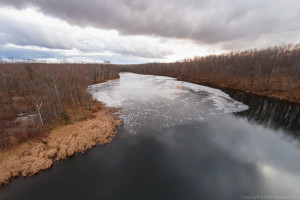 Now, just like with other seasons of the year in the winter you’ll find unique events. The freezing over of lakes and rivers is a perfect example. In this image I’ve flown out over Terracotta Lake as the ice cover grew towards the shoreline. The natural slant of the land, stratus cloud cover and angle of the ice balanced the photo perfectly. This was one of those lucky and nice natural photos that just balanced itself. It was also a photo that would have been physically impossible any other way. The lake is too small to launch a large boat into, the angle of the image to high to be taken from the tip of a mast and too far into the lake to be taken from the shoreline. In otherwords, it’s a UAV only photo, something that no one else can capture any other way.
Now, just like with other seasons of the year in the winter you’ll find unique events. The freezing over of lakes and rivers is a perfect example. In this image I’ve flown out over Terracotta Lake as the ice cover grew towards the shoreline. The natural slant of the land, stratus cloud cover and angle of the ice balanced the photo perfectly. This was one of those lucky and nice natural photos that just balanced itself. It was also a photo that would have been physically impossible any other way. The lake is too small to launch a large boat into, the angle of the image to high to be taken from the tip of a mast and too far into the lake to be taken from the shoreline. In otherwords, it’s a UAV only photo, something that no one else can capture any other way.
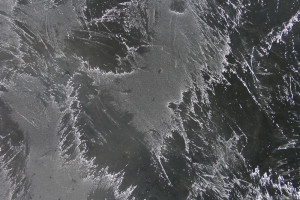 The ice on Terracotta Lake also provided for some natural symmetry that is only visible from an aerial perspective. Here you can see cracks and fissures in the ice underneath a top cover dusting of snow blown by the wind. The end result of all this natural action is the cool jagged white frosty looking scene. If I did not know any better this might as well be a macro image of a frosty window. This photo also gets at another thing UAV’s can do that photographs can’t or at least should not. UAV’s can go where it is too unsafe for any person. Because it’s early in the winter season and many bodies of water are just starting to freeze over the ice is very thin and it’s naturally a crazy idea to venture out, but suppose it’s later in the season? The truth is that no ice is safe ice. Without actually sampling the ice or conducting a stress test there’s no way of knowing how much load any frozen water can hold and many people gave gotten themselves into trouble venturing out onto frozen bodies of water. Why take a chance for that perfect photo when you can send your UAV out safely? I can’t tell you how many times I’ve almost ventured out into the frozen water of Toronto’s harbour for some photos but turned around at the last minute out of fear. At least now I don’t have to such a daring fool! That said, I don’t recommend you send your aerial vehicle into a location that’s dangerous for it either such as say, a boiling volcano!
The ice on Terracotta Lake also provided for some natural symmetry that is only visible from an aerial perspective. Here you can see cracks and fissures in the ice underneath a top cover dusting of snow blown by the wind. The end result of all this natural action is the cool jagged white frosty looking scene. If I did not know any better this might as well be a macro image of a frosty window. This photo also gets at another thing UAV’s can do that photographs can’t or at least should not. UAV’s can go where it is too unsafe for any person. Because it’s early in the winter season and many bodies of water are just starting to freeze over the ice is very thin and it’s naturally a crazy idea to venture out, but suppose it’s later in the season? The truth is that no ice is safe ice. Without actually sampling the ice or conducting a stress test there’s no way of knowing how much load any frozen water can hold and many people gave gotten themselves into trouble venturing out onto frozen bodies of water. Why take a chance for that perfect photo when you can send your UAV out safely? I can’t tell you how many times I’ve almost ventured out into the frozen water of Toronto’s harbour for some photos but turned around at the last minute out of fear. At least now I don’t have to such a daring fool! That said, I don’t recommend you send your aerial vehicle into a location that’s dangerous for it either such as say, a boiling volcano!
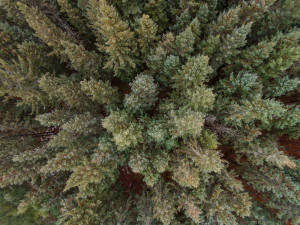 Lastly, remember there is still some colour in the landscape. You don’t always have to limit yourself to shades of white and gray. There are many plants and trees that remain green throughout the winter and often the ground beneath the trees is a shade of red or brown thanks to pine needles or fallen leaves. You don’t have the same variety of colour or choice that you have in the summer, but there is still choice to be had. It’s not perfect, but it’s still there and you never know, there are plenty of great aerial shots waiting to be had!
Lastly, remember there is still some colour in the landscape. You don’t always have to limit yourself to shades of white and gray. There are many plants and trees that remain green throughout the winter and often the ground beneath the trees is a shade of red or brown thanks to pine needles or fallen leaves. You don’t have the same variety of colour or choice that you have in the summer, but there is still choice to be had. It’s not perfect, but it’s still there and you never know, there are plenty of great aerial shots waiting to be had!
Now there are a few things you need to consider about winter time aerial photos. Firstly, cold weather will adversely effect your battery life plus flight time and the colder it get’s the greater the effect. Secondly, depending on the make and model of your aircraft there is a minimum temperature limitation and it might just be too cold to fly safely without your motors grinding to a halt or electronics shutting down. Third, with less foliage in the winter and a more barren landscape, your craft will be exposed to stronger winds at a lower altitude more often and the winter tends to be much more windy than the summer in general. Forth, if there is snow cover, especially deep snow cover, keep this in mind since your landing area will be greatly reduced.
Despite all the negatives, there are some clear bonuses to winter time flights. Firstly, because there is less vegetation and far fewer leaves your aircraft line of sight for radio control becomes substantially better. Areas that had too much foliage to successfully penetrate are often easily penetrated in the winter. Second, there are less people out and about to strike up a conversation with you while your battery rapidly drains in flight. I love chit chatting, but when I’m finished flying, otherwise I get distracted and waste valuable battery life. Third, you can fly your UAV in light snow safely. While I don’t recommend it, you can get away with it so long as the air is cold enough to keep the snow dry and prevent it from sticking to your craft. You should never fly your UAV in rain, fog, mist or anything else that makes it wet. Water will damage your UAV. Last but not least, if you fall out of the sky and snow will cushion your landing. Yeah I know, it’s not a huge help, but at least it’s a better cushion than no cushion!
Safe flying!
